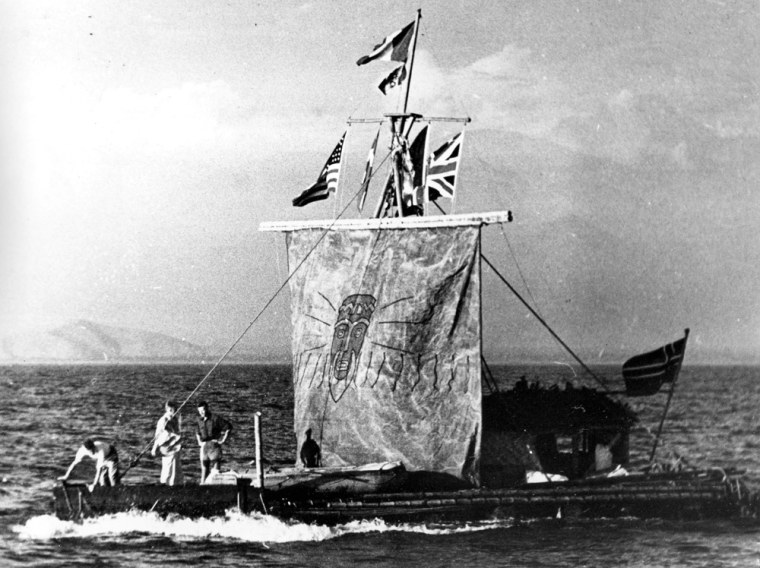An effort to re-create the late Thor Heyerdahl’s famed 101-day Pacific crossing aboard the Kon-Tiki balsa raft resumed Tuesday after a postponement forced by last year’s southern Asia tsunami.
The team, which includes the Norwegian adventurer’s grandson, Olav Heyerdahl, plans to sail from Peru in late April, a year later than originally scheduled.
“It is very good. It is fun. And now the financing is in place,” the 28-year-old Heyerdahl said of the $900,000 project.
After the Dec. 26, 2004, tsunami that killed thousands in southern Asia, the team postponed the project for a year because key sponsors had diverted funds to help victims.
In 1947, Thor Heyerdahl’s team sailed a raft 4,900 miles (7,850 kilometers) from Peru to Polynesia to show that prehistoric explorers could have migrated across vast oceans. Heyerdahl, who died in 2002 at age 87, documented the harrowing voyage in a best-selling book and Oscar-winning documentary, both called “Kon-Tiki.”
Educational dimension
Outside the Kon-Tiki Museum in Oslo, some of the team arrived aboard a half-scale model they built of the original raft, sailing part of the way. Young schoolchildren lined the wharf.
The team has introduced a program of building model rafts in schools as part of the educational dimension of their project.
“We wanted to make raft building a school subject, and we did it,” said team leader Torgeir Saeverud Higraff, a 32-year-old teacher and journalist.
On shore, the adventure’s grandson said he had discussed it with the family before deciding to be the second Heyerdahl to set off a balsa raft, this time to be named for Tangaroa, the Polynesian god of the ocean.
“As long as it was a serious project, they were in favor,” the younger Heyerdahl told The Associated Press. “If they had been negative, I would have said ’no.”’
Construction to begin next year
Heyerdahl, a building engineer, carpenter and diver, will head to Ecuador in January to select balsa logs, and lead the construction of the raft in Peru.
The project is endorsed by the Kon-Tiki Museum, and is backed by the Norwegian Environment Ministry, private businesses and Heyerdahl’s home town of Larvik, in southern Norway.
In addition to honoring Heyerdahl, the team members want their own 101-day voyage to draw attention to environmental threats, do scientific research, test ancient navigational techniques and be an educational tool.
Although the Tangaroa will be primitive as the Kon-Tiki, it will also be loaded with modern technology, including solar panels for electricity, and satellite communications that will allow the team to transmit Internet updates.
The six-member team will include four Norwegians, a Swede and a Peruvian, who has yet to be selected.
